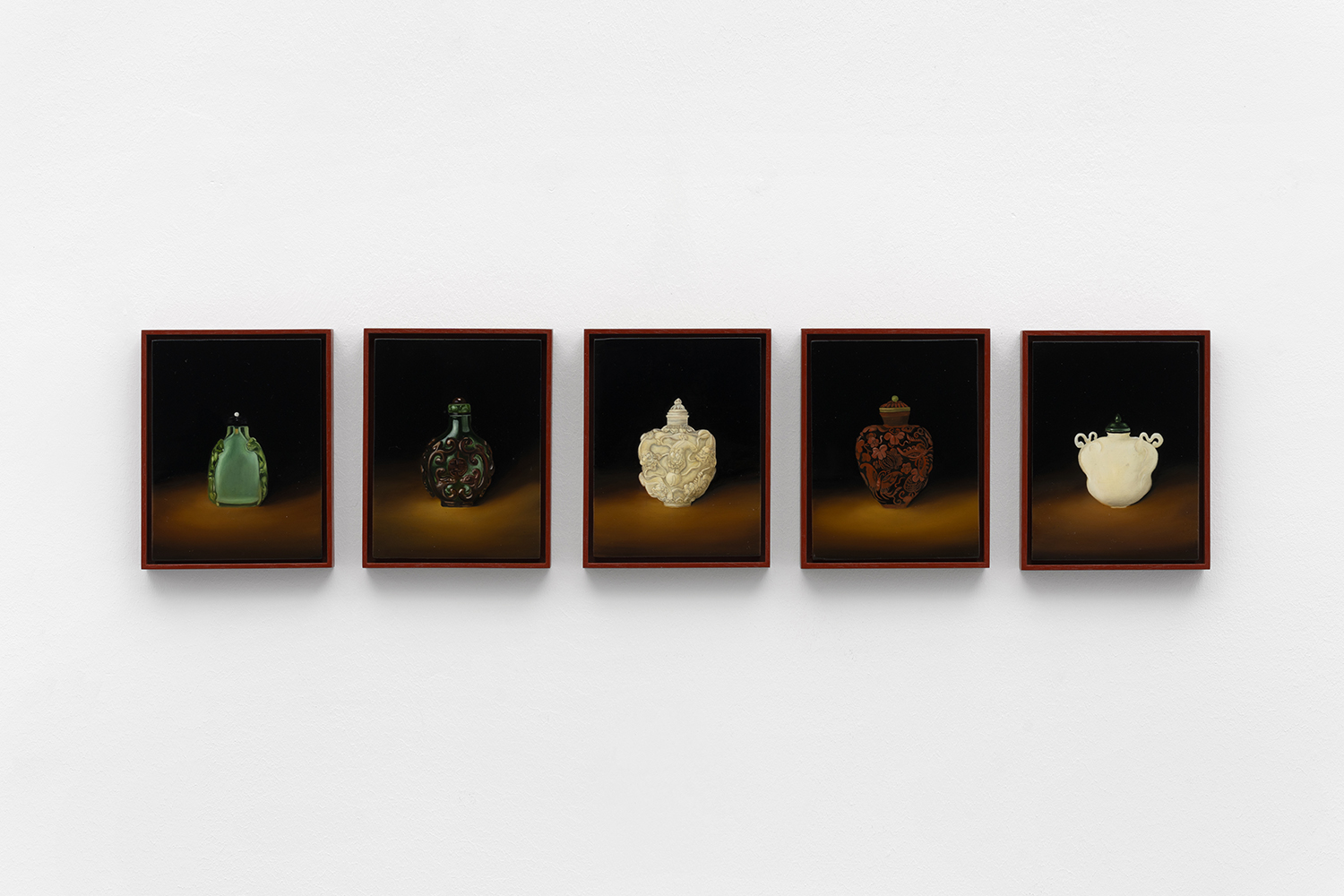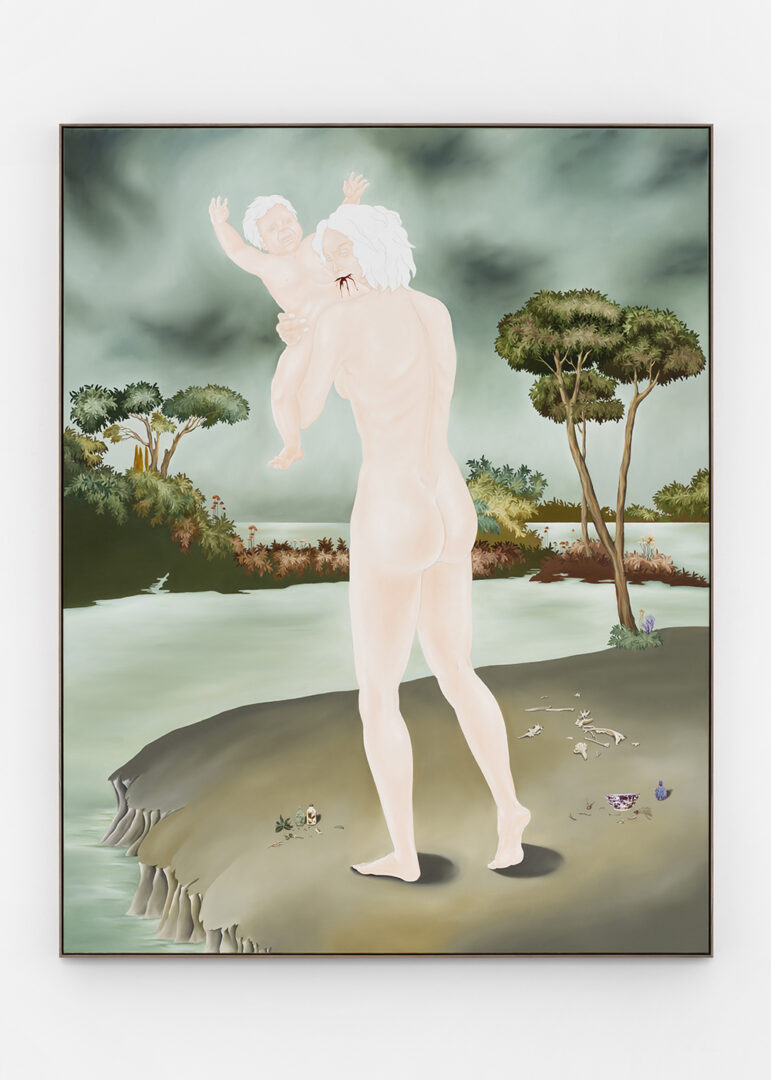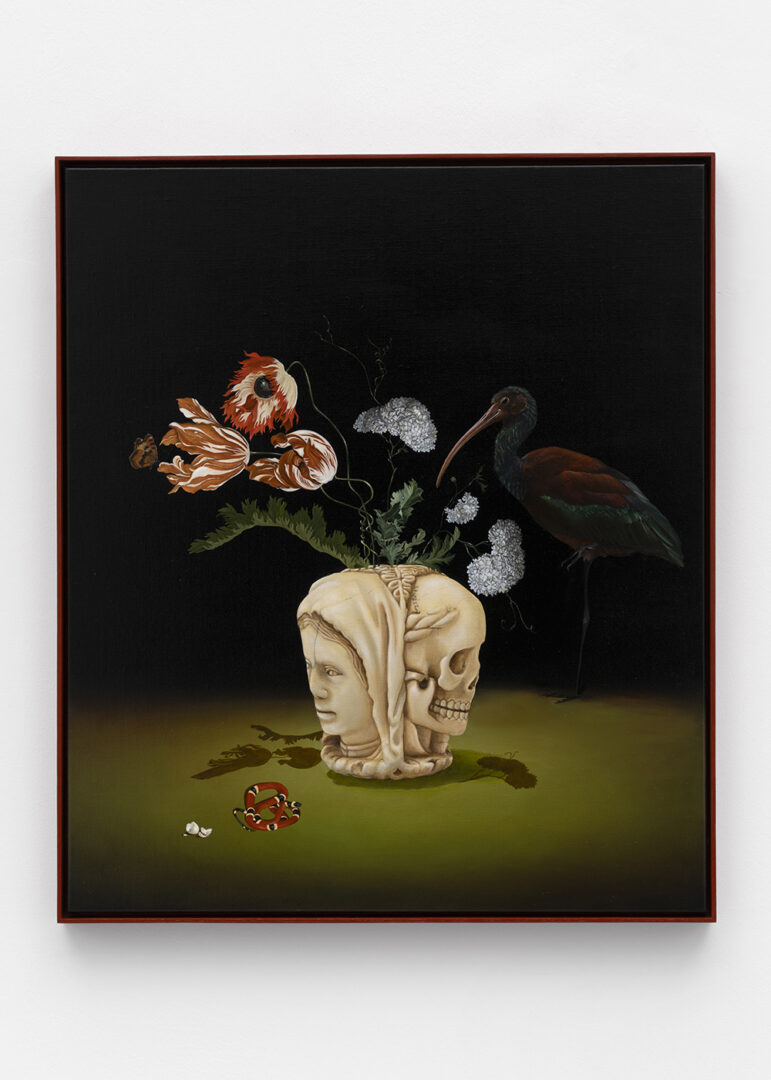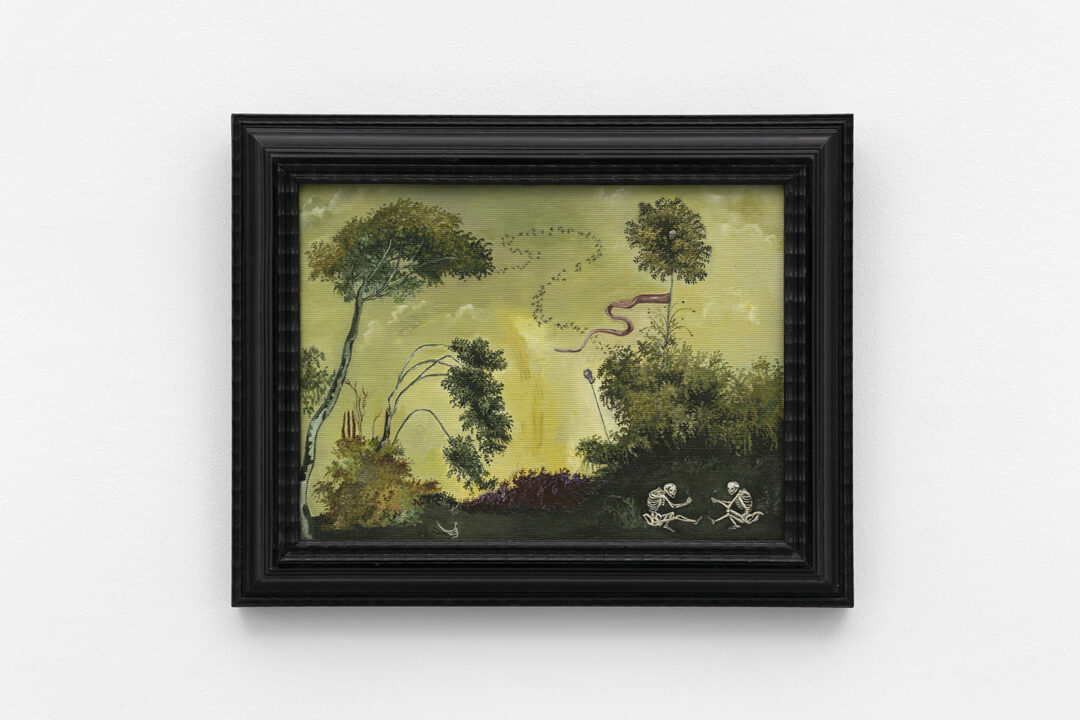Sanam Khatibi

Sanam Khatibi
The Hunger
Mendes Wood DM Paris
April 3 – May 17, 2025
In most group shows, but especially in her solo exhibitions, Sanam Khatibi gives the impression of temporarily moving in—setting up camp in the gallery space. Her exhibition The Hunger at Mendes Wood DM in Paris is no exception. Wherever she is based, artist blurs the line between her living and working environment; her studio is in her house, or perhaps her house is in her studio. Either way, it is a real Wunderkammer occupied by objects stranger, more astonishing, more provocative, or more sentimental than the next: animal skeletons, ceramic vessels, human and animal sculptures coming from all corners of the world, clay bowls and vases, bone carvings, rock phalluses and plastic Playmobile relics.
These objects also appear in Khatibi’s paintings, occupying central or peripheral roles. Her visual language circulates between surrealist influence and a Northern European Renaissance technique. A self-taught painter, she reproduces objects placed under direct vertical lighting, eliminating most lateral shadows. The result: forms that seem to hover, as if pasted into space—almost floating.

At Mendes Wood DM, all but one of her paintings fall into two categories: still lifes and landscapes. The landscapes stretch into misty depth—dreamy, often windswept forests outside of time, inhabited by animated skeletons: playing, resting, or fighting (Two Seater; Residues of A Rainbow). Naked humanoid figures, some headless and limbless, appear in a few works (Riot; A View to a Kill) doing exactly what the skeletons do. Are they predecessors, descendants, or echoes? Continuations—or contradictions?
Miniature windows onto another world in Leon Alberti’s classical sense (for most don’t exceed 20 cm in length), Khatibi’s paintings are enclosed in elaborate frames with multi-layered friezes, thus enhancing the degree of separation between our world and theirs. In The Hunger, one symbol recurs: a water jug, knocked over or perched upside down on a stick, but never standing upright. Mid-spill or already empty, it directly echoes our current resource crisis—our drinking water, our flesh, drying out, turning us into live skeletons.
Sanam Khatibi’s work is deeply symbolic, open to myriads of personal interpretations. Standing amid her works, and more so her still lifes, can feel unsettling, like stepping into a spell, a painted sigil. The objects from her studio reappear like magical ingredients—positioned and scaled with ritualistic precision against neutral backdrops. Like recurring characters in a narrative, certain motifs return: a green jade vase, broken eggshells, venomous snakes, Rembrandt tulips—permeating with uncanny vitality.

This feels paradoxical, for her iconography—venomous snakes, bones, scavenging birds eating lizards, severed flowers, and, of course, skulls—leans into themes of mortality. And yet, Khatibi’s still lifes pulse with life. These natures mortes—dead natures—somehow become living compositions. Death and life aren’t opposites here but parts of the same continuum. Perhaps those broken eggshells aren’t signs of endings, but beginnings.
The exhibition culminates in the large-scale painting Put Your Honey Where Your Mouth Is, depicting a naked woman devouring a baby in a dreamy coastal landscape. A female version of Cronus, perhaps—the Greek titan who tried to challenge fate, wanting to rule forever, and thus consumed his children one by one. At her feet lie bones, plants, and Chinese opium snuffboxes, grouped in three clusters—reminiscent of the sigils that perhaps compose each of Khatibi’s still lifes.
These works impress and amuse; they captivate and provoke. Ultimately, they let the weight of human tragedy slip—gently—beneath layers of attractive, curious objects Portraits of ourselves in the ongoing cycle of perception and projection, Sanam Khatibi’s lacquered paintings allow us to dive into the layered complexity of her imagined world.

Head image : Sanam Khatibi, Amulets (vi – x), 2025. Oil on panel, 5 paintings 13.4 x 10.3 cm (each), 5 1/4 x 4 in (each). Courtesy of the artist and Mendes Wood DM, São Paulo, Brussels, Paris, New York. Photo: Nicolas Brasseur.
- Share: ,
- By the same author: Streaming from our eyes, Déborah Bron & Camille Sevez, Ho Tzu Nyen, GESTE Paris, The summer of collaboration at CRAC Alsace and CRÉDAC: “L’amitié : ce tremble” and "Tripple Dribble",
Related articles
Performa Biennial, NYC
by Caroline Ferreira
Camille Llobet
by Guillaume Lasserre
Thomias Radin
by Caroline Ferreira